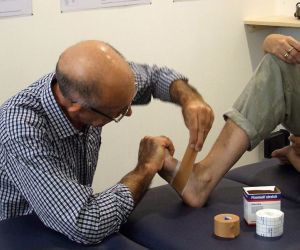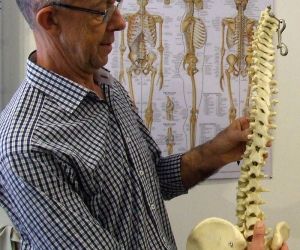Core strength relates to the muscles of the abdomen and pelvic floor. Core strength is essential to maintaining stability in the lumbar spine. Core strength is often lost after injury or periods of lower back pain. In cases where manual therapy to joints and muscles does not give lasting relief, the problem can be intervertebral instability. In this situation spinal joints become too loose, move too far and stress ligaments and small muscles around the spine. Pain is the result. Improved core stability can be achieved by learning specific abdominal exercises that you can do at home as floor exercises and/or fit ball exercises with graded resistance and difficulty.
Stability and anatomical positioning is also important for the shoulder girdle. If the shoulder blades are positioned poorly on the rib cage, the biomechanics of the shoulder joints is adversely affected. Building stability and good positioning of the shoulder blades can be an effective treatment strategy for chronic shoulder problems.
Conditions treated
- Core stability
- Hips, knees, ankles and feet
- Lower back pain
- Management of acute injuries
- Neck pain and Headache
- Neurological pain in arms and legs
- Overuse injuries
- Pelvic Asymmetry
- Physical Rehabilitation
- Problems associated with cycling
- Problems associated with yoga
- Shoulder, elbow, wrist, hand, and fingers
- Sports injuries
- Vehicle seating - adjustment and adding support
- Work injuries



